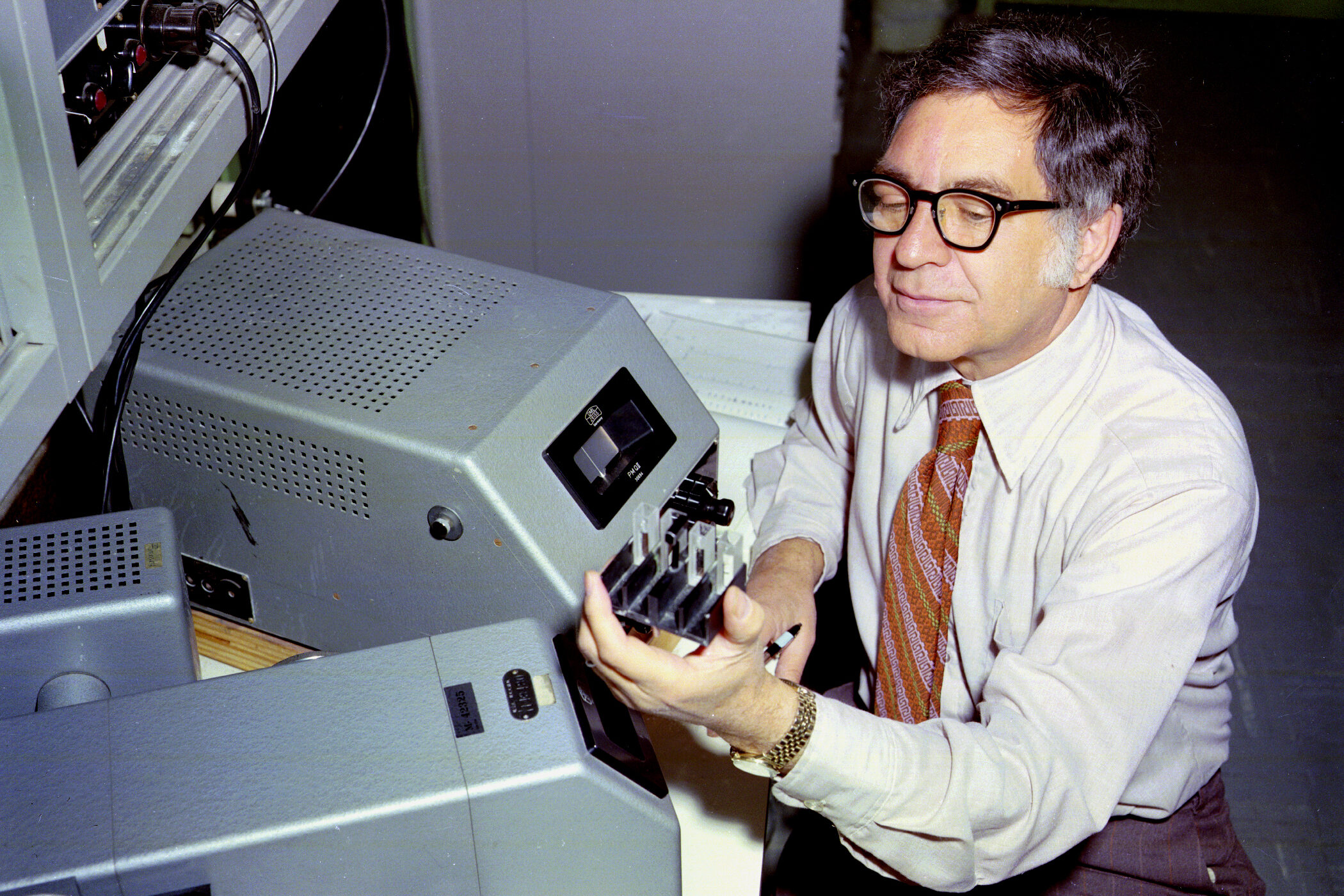
1965
Illuminating mRNA
In 1956, ORNL biologists Elliot "Ken" Volkin and Lazarus Astrachan observed the role that RNA plays when a virus infects a bacterium. Five years later, French scientists François Jacob and Jacques Monod further illuminated the function of mRNA, for which they received the 1965 Nobel Prize in Medicine and Physiology.
Insights into the role of RNA

Elliot Volkin
The COVID-19 pandemic has added a lot of new terms to daily conversation. Phrases like “mask mandate” and “social distancing” will probably fall into disuse when COVID-19 passes from the scene. However, “mRNA vaccine,” is likely to have more staying power.
mRNA is a specialized type of RNA — a molecule that’s similar to its cousin, DNA, the molecule that carries genetic information in all known forms of life.
Early studies
Studies on the structure of RNA were done at ORNL in the early 1950s by biologist, Elliot “Ken” Volkin and biochemist Waldo Cohn. They used radioisotope and chromatography techniques that were originally developed for plutonium production at the laboratory’s Graphite Reactor during World War II.
In 1956, further research by Volkin and ORNL biologist Lazarus Astrachan enabled them to observe the role that RNA plays when a virus infects a bacterium. This interaction proved to be critical to understanding the role that RNA plays in viral infections.
Paul Berg, winner of the 1980 Nobel Prize in chemistry, said Volkin and Astrachan discovered that when a bacteriophage virus infects a bacterium, “the virus ‘turns off’ the [bacterial] cell’s machinery for making its own proteins and ‘instructs’ the cell’s machinery to make proteins characteristic of the virus. That instruction entails making a new kind of RNA, a copy of the virus’s DNA. This discovery revealed a fundamental mechanism for gene action: the coding sequences of genes are copied into short-lived RNAs that are transported out of the nucleus into the cytoplasm, where they are translated into proteins.
“Because such RNAs transport information from genes in the nucleus to the cytoplasm they are designated as messenger RNAs.”
Former ORNL director, Alvin Weinberg said that Berg described these studies on messenger RNA (mRNA) as an “unsung but momentous discovery of a fundamental mechanism in genetic chemistry” and a “seminal discovery [that] has never received its proper due.”
DNA-like RNA
Volkin and Astrachan called this new kind of RNA “DNA-like RNA” and spent several years investigating its behavior. Their findings, published in 1956, received a less-than-enthusiastic reception in the biology community. Volkin reportedly thought that the findings weren’t widely accepted because they didn’t agree with theory at the time — even though he and Astrachan repeated the studies several times with the same results.
Five years later, French scientists François Jacob and Jacques Monod published a paper that further illuminated the function of mRNA, an accomplishment for which they received the 1965 Nobel Prize in Medicine and Physiology.
The success of mRNA vaccines in slowing the COVID-19 pandemic, makes it likely that we will soon see efforts to apply similar technology to the task of warding off a range of infectious diseases. It also illustrates the importance of basic scientific research — like Volkin and Astrachan’s findings — which, although they were dismissed at the time, ultimately helped to pave the way for a new class of pandemic-beating vaccines. —Jim Pearce